You’ve finally worked up the courage to ask out that cute barista at the café. It’s the night of your first date and you’re dressed to the nines. As you tie the laces on your dress boots before heading out the door, you see a large, noticeable crack in the leather.
While it’s not the end of the world, dry, cracked leather boots aren’t going to help you make a great first impression.
Putting some effort into properly maintaining your leather boots is vital to keep them looking sharp and to prolong their life.
How do you keep your boots in top shape? In this article we’ll explore how to clean, condition, polish, and waterproof your leather boots.
In particular, you will find:
Why Should Men Wear Leather Boots?

Clean and well cared for leather boots should be a staple item in every man's wardrobe.
Well-made leather boots are a great way to level up your casual wardrobe. Functional and masculine, boots help you to stand out (in a good way).
In fact, a study conducted by GQ magazine showed that over three-quarters of women surveyed think that boots are the most attractive type of footwear a man can wear on a first date.
Quality leather boots aren’t cheap. You can help increase the value of your investment by taking good care of your boots. Regularly cleaning, conditioning, and polishing your leather boots takes just minutes each week and can potentially add years to their life.
How Do You Clean Leather Boots?
Your footwear is your foundation. When meeting new people, your shoes are often one of the first things that people notice about you. Not only do dirty, grimy, or salt-stained boots look sloppy, they also wear out faster than boots that are clean, polished, and conditioned regularly.
Let’s begin by reviewing how to clean leather boots:
What can I use to clean my leather boots?

- Newspaper or old cloth
- Horsehair brush
- Slightly damp rag
- Saddle soap
How to clean leather boots the right way
- Remove the laces – Removing the laces makes it easier to access hard-to-reach areas of the boot such as the tongue.
- Clean / replace the laces – Place the boots on newspaper or an old piece of cloth laid out flat on a table or counter. Use a horsehair brush to give the leather some light buffing.
The goal here is removing any loose dirt or salt particles which can damage the leather over time.
You may want to use an old toothbrush to help you to remove dirt that is deeply entrenched in the welt. Ideally, you should give your boots a quick brush after each time you wear them outside.
- Brush off dirt and salt – Place the boots on newspaper or an old piece of cloth that's flattened on a table or counter. Use a horsehair brush to give the leather some light buffing. The goal here is removing any loose dirt or salt particles which can damage the leather over time. You may want to use an old toothbrush to help you to remove dirt that is deeply entrenched in the welt.

- Clean your boots with saddle soap – If your boots are particularly grimy, stained, or mud-caked, you can use saddle soap for a deep clean.
With a damp rag or small brush, rub the surface of the saddle soap in a circular motion to create a light lather.

Next, rub the suds onto the outer surface of the boots, being sure not to overlook hard-to-reach areas such as the welt and tongue.
- Let the boots air dry for 10 minutes.
What Do You Put On Leather Boots To Condition Them?
While visible dirt and salt can harm leather, dry conditions are leather’s “silent killer.”
Dry, unconditioned leather can easily crack— especially when exposed to water. When leather’s natural moisture escapes due to dry conditions, the fibrous interweave will start to weaken and visible cracks form.
Sadly, there's no way to repair cracks once they form. Therefore, preventing shoe damage is the key.
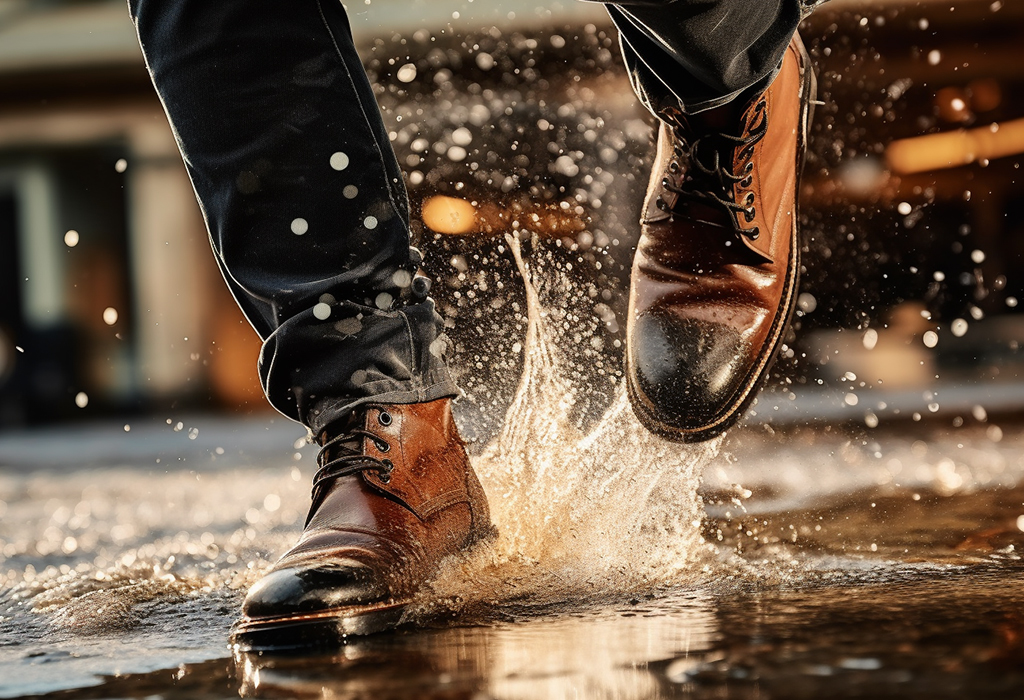
By always keeping the leather supple, you'll avoid the tragedy of having a $250 pair of winter boots break down weeks after buying them.
Few people realize that new leather shoes and boots need to be conditioned before regular wear. I’d recommend treating them the day they are purchased because they could have been left inside a storage room, their leather deprived of oil and moisture, for months. For that reason, don't expect them to come out of the box well-conditioned.
What can I use to condition leather?
- Piece of old cloth (to lay the boots over)
- Good leather conditioner or balm
- Small applicator brush
- 2 dry clean rags
- Give the boots a quick rub-down with a dry rag. This is to dislodge any remaining dirt or tiny dust particles clinging to the leather.
- Apply leather conditioner / balm. With an applicator brush, apply your leather conditioner/balm to an inconspicuous location, like the tongue of the boot. Wait a few hours for it to dry.
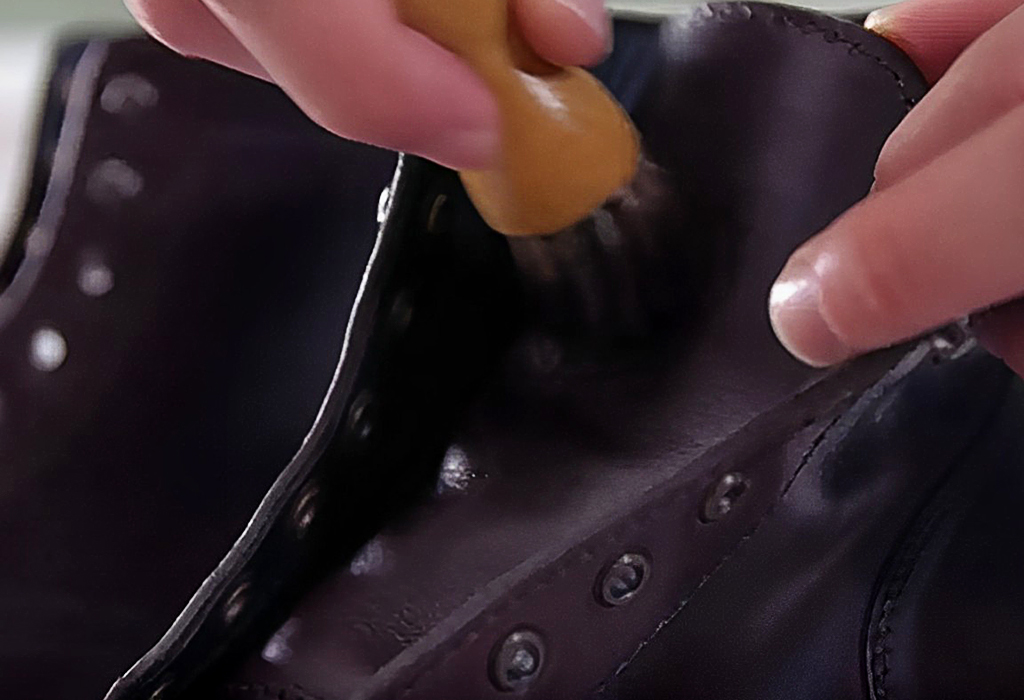
This test is to ensure that the conditioner doesn't drastically affect the color of the leather.
Note that almost all conditioners can darken the leather slightly (especially for the first few days).
- Rub conditioner into the boot: Pour a quarter-sized amount of conditioner/balm onto the second rag (rags made of chamois or terrycloth are ideal) and rub it on the leather. Use circular motions without pushing down hard – going back and forth along each boot. You want to get the product in all crevices and creases.
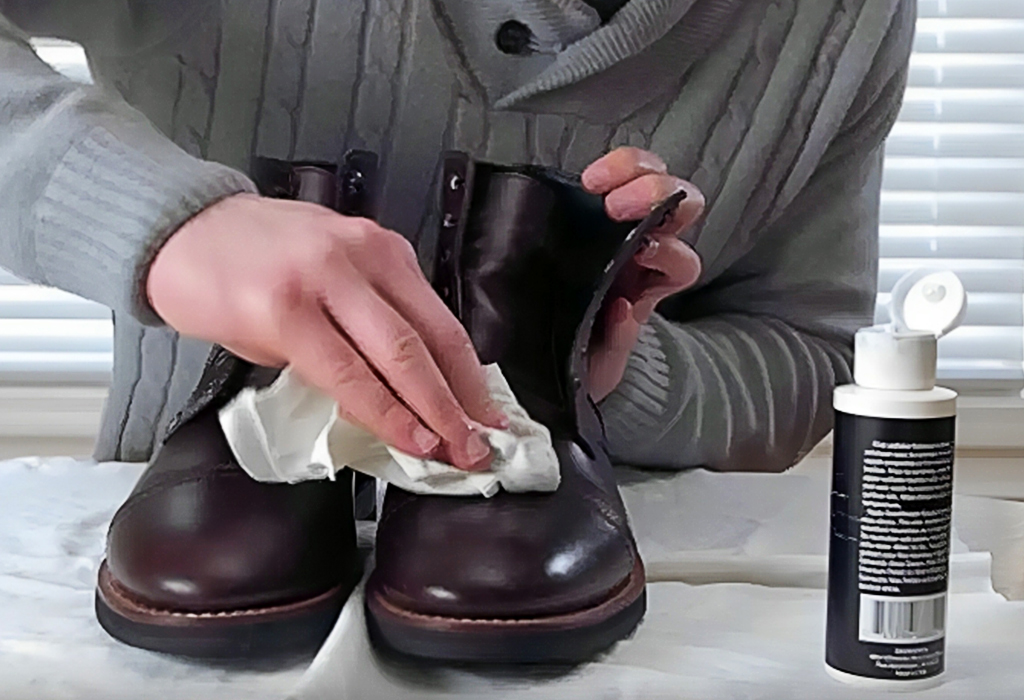
Use as much product as the leather needs. If your boots seem especially dried out or you haven't treated them in a while, you may need two, or even three applications for the boots to be fully reconditioned. However, boots that are regularly maintained may just need one quick application of conditioner.
You know your boots are fully hydrated when the product you’re using stops soaking in and the leather starts to get damp.
- With a clean cloth, wipe off any excess product.
- Let boots dry for 20 minutes. After they’ve rested for about 12 hours, once again give them a rub with a dry rag to absorb any remaining excess oils or moisture.
You should condition your boots often. As a general rule, condition them once every 3 months if you live in a temperate climate— and once a month if you wear the boots every day or live in a dry, hot climate.
How Do You Polish And Shine Boots?
After conditioning, you may wish to polish them. Polish renews the leather's color and provides even more luster and protection. This step is particularly helpful for elegant dress boots.
Polishing your boots isn't always necessary. In fact, many men enjoy the patina that unpolished, rugged boots develop over time.
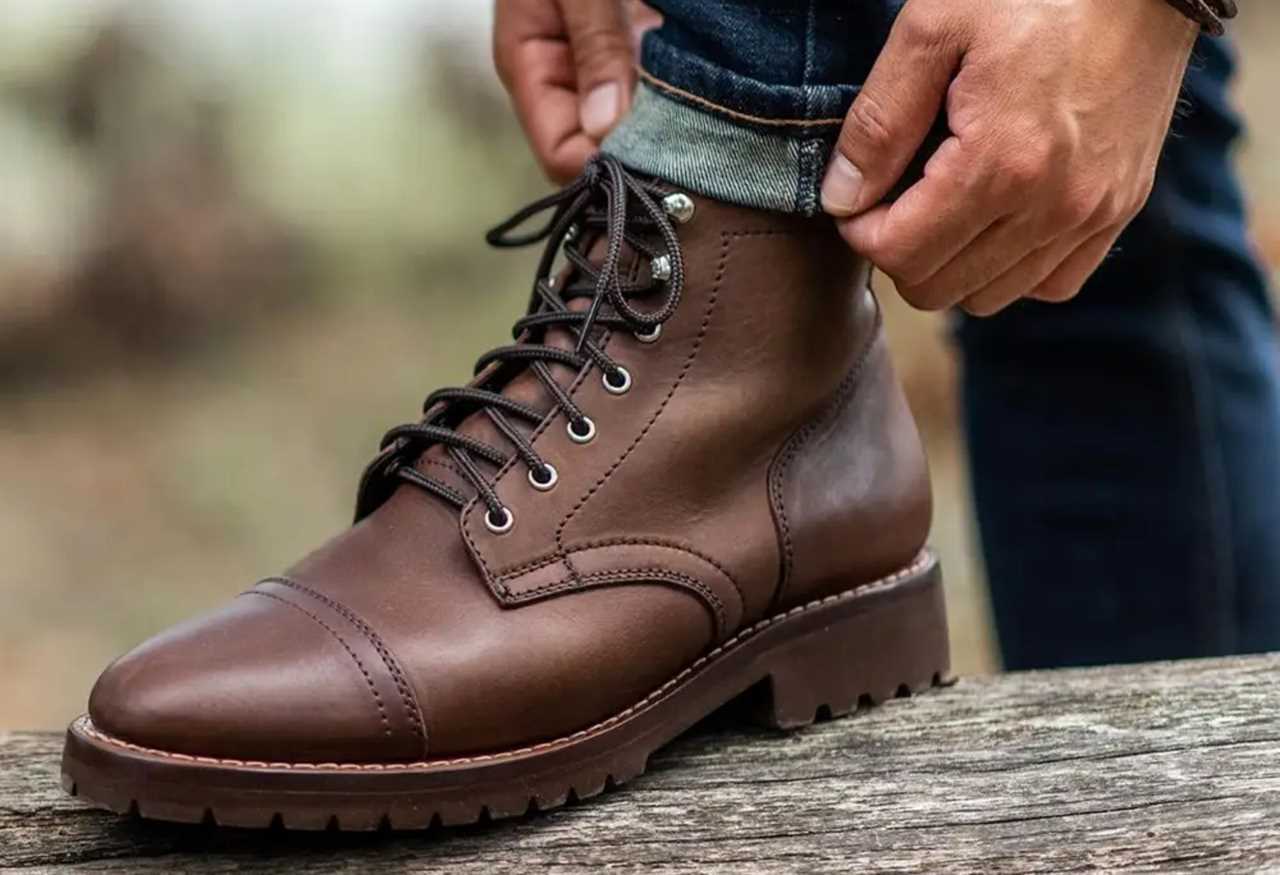
Materials for Polishing
- Newspaper of a piece of old cloth
- Either a cream shoe polish or wax-based polish
- Small applicator brush
- Soft clean rag
- Clean horsehair brush (i.e. not the same brush you used for removing dirt)
Steps to applying cream polish:
- Check that the polish matches: Make sure the cream polish matches the leather. Test on the tongue if necessary.
- Spread the cream onto the boot upper: Use the applicator brush to work the cream evenly over the entire boot. Start off with a small amount then add more if needed.
- Using a clean horsehair brush, end with a quick buffing.
- Let the boots dry for 15 minutes.
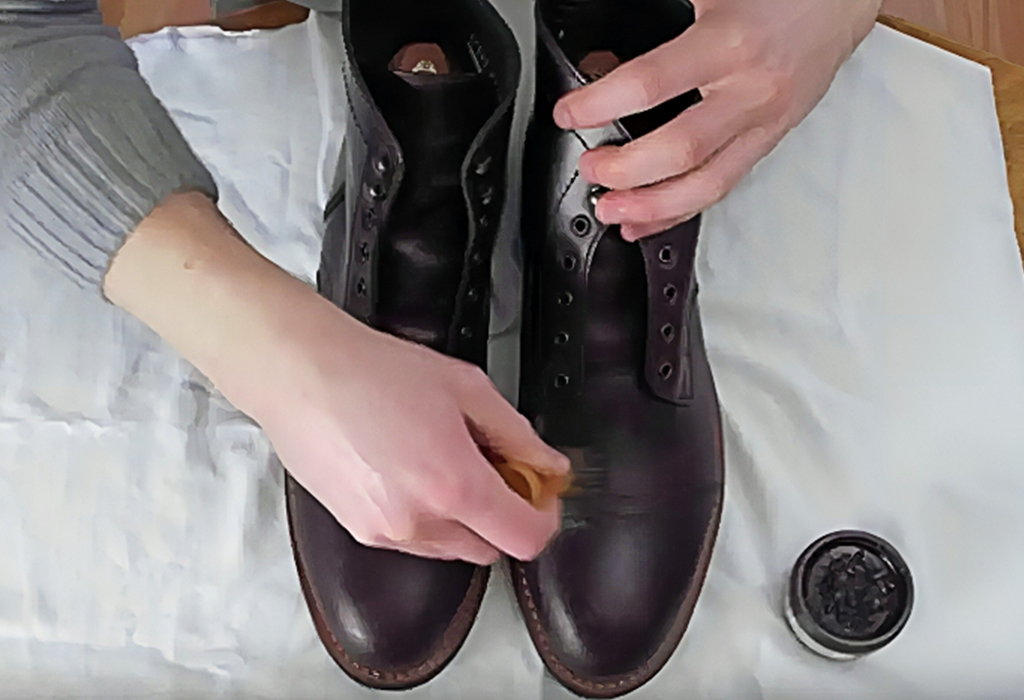
Now that your boots are shined they’re looking as good as new!
Cream polish doesn't provide as much shine as wax-based polish but it adds extra moisture and nourishment. It will also help bring back the natural color of your boots when the leather starts to fade.
Steps to applying wax-based polish:
- Get ready. Wrap the soft rag around your index and middle fingers and dip them into the wax.
- Apply the polish. Using small, circular motions apply the polish to the boot. Keep working until you coat the entire boot.
Leave that leather boot aside and do the same for the other.
- Buff the boots. Do a quick buffing using the horsehair brush. Repeat to get a really nice mirror shine.
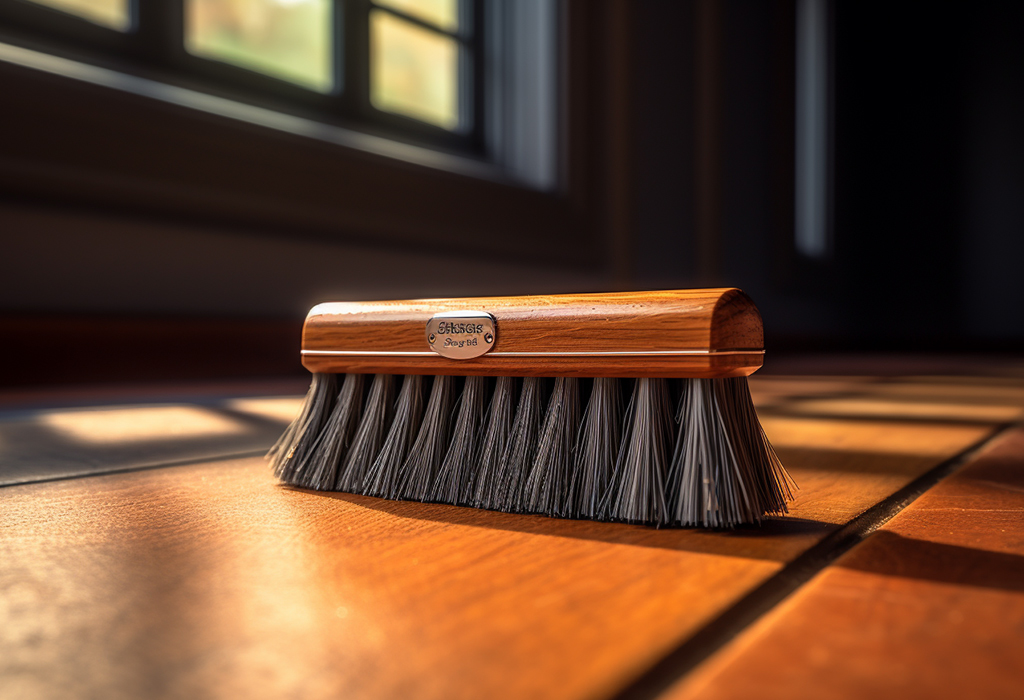
The wax-based polish should be the final layer when you're polishing your boots (i.e. don't attempt to put cream polish over it).
Wax-based polish adds shine and protects your boots against salt or water. It also locks in the leather conditioner so you can extend the time that passes before it needs to be reapplied.
I like to do a quick polish after every wear, however, you can get by with polishing your boots thoroughly once a week with either a cream or a wax polish.
What Can I Put On Leather Boots To Waterproof?
Properly treated high-quality leather boots are typically water-resistant. However, if you live in a cold, wet climate (like I do) you may want to take extra steps to waterproof your boots.
Using a waterproofing agent is particularly effective at combating damage from snow and salt during the winter months. Following the boot manufacturer’s instructions for waterproofing if possible will give you the best results.
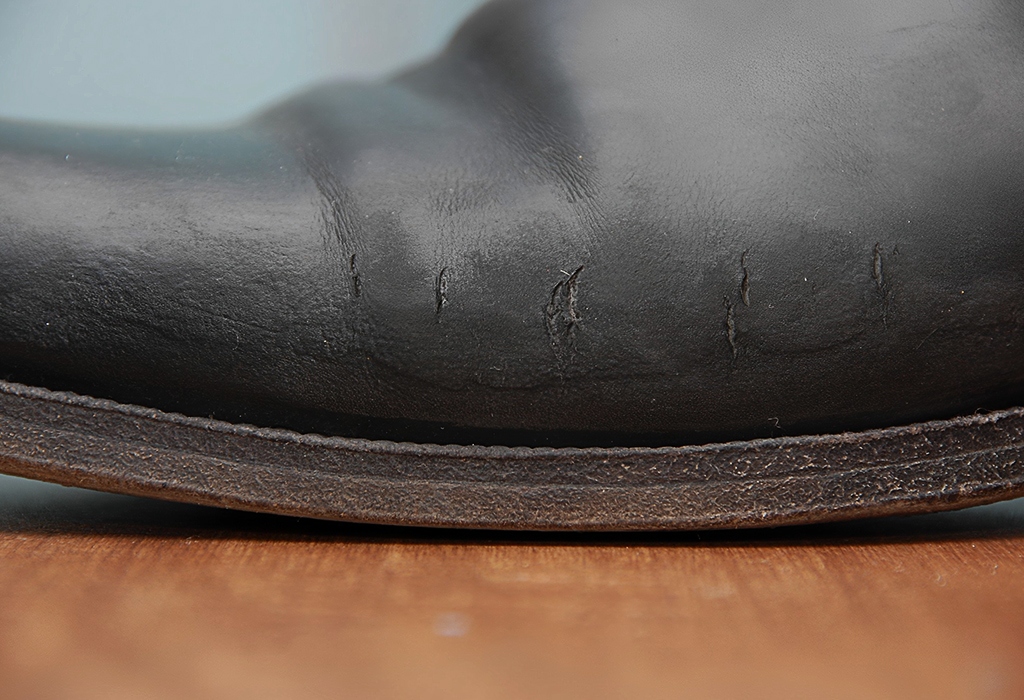
While there are many types of waterproofing agents on the market, there are two broad categories – solid compounds that are rubbed into the leather, and liquid agents that are sprayed onto the boot. Follow the instructions on the label of waterproofing products.
What to do with soaked boots?
Despite your best efforts to waterproof your boots, there’s always a chance that they will still get soaked. If that happens it is critical that you avoid the temptation to speed up the drying process.
Whatever you do not leave them next to a fire, a radiator, or another type of external heat source. High heat can cause the leather to dry too quickly which can cause irreparable cracks to form.
The one safe step you can take to help wet boots dry out faster is to remove insoles (if possible) and stuff the boots with dry, crumpled-up paper towels or newspapers. Every few hours replace the paper as it becomes damp.
Otherwise, be patient and allow your boots to dry naturally at room temperature.
Click here to increase your boot care knowledge even further with my ultimate guide to suede footwear.
Check out this video for more information about how to care for leather boots like a pro:
The post How To Clean Leather Boots | Men’s Boots Care Guide appeared first on Real Men Real Style.
https://www.realmenrealstyle.com/leather-boots-care-guide/
Did you miss our previous article...
https://manstuffnews.com/men-fashion/how-to-wear-a-beanie-in-9-stylish-amp-modern-ways
 Backyard GrillingWeekend WarriorsAdvice from DadBeard GroomingTV Shows for Guys4x4 Off-Road CarsMens FashionSports NewsAncient Archeology World NewsPrivacy PolicyTerms And Conditions
Backyard GrillingWeekend WarriorsAdvice from DadBeard GroomingTV Shows for Guys4x4 Off-Road CarsMens FashionSports NewsAncient Archeology World NewsPrivacy PolicyTerms And Conditions
